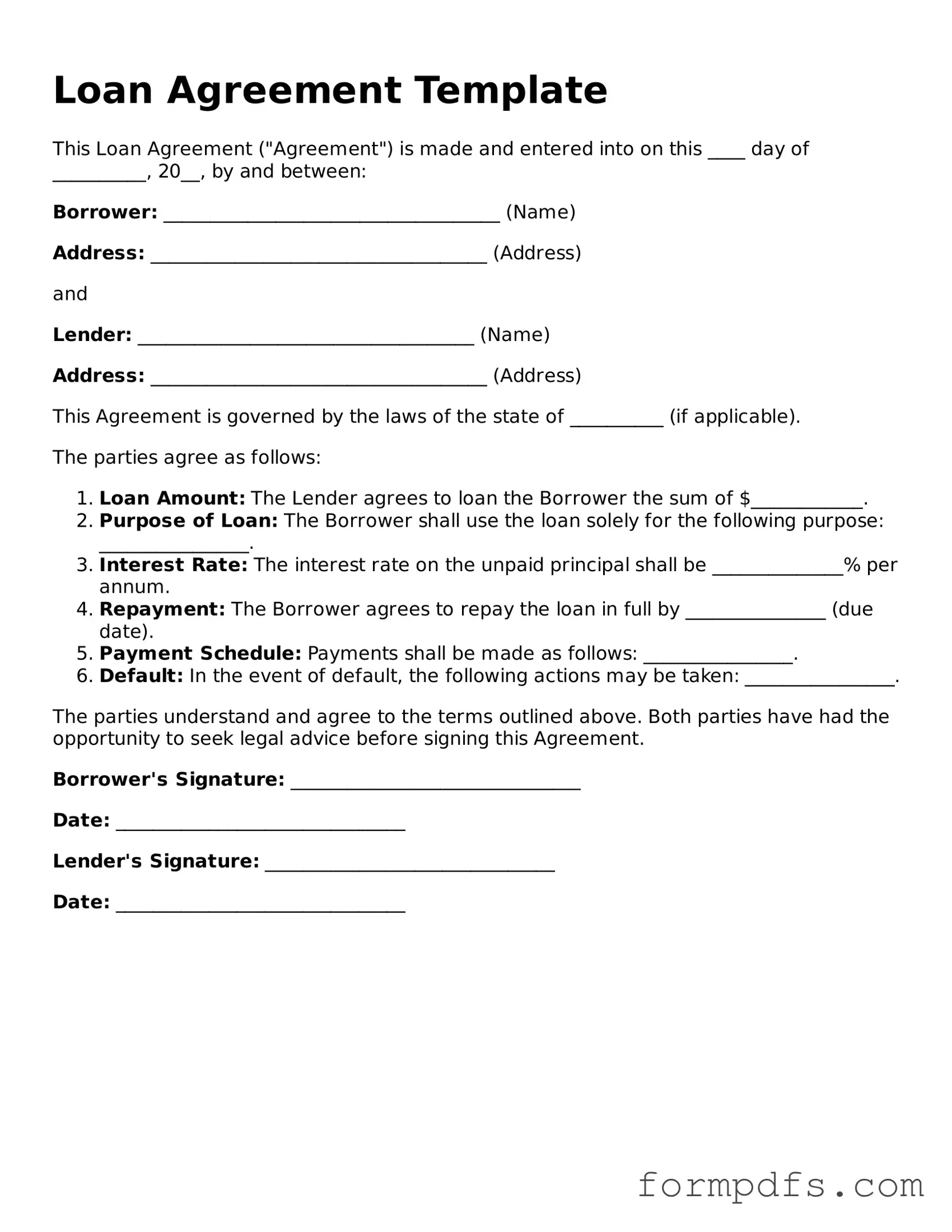What is a Loan Agreement form?
A Loan Agreement form is a legal document that outlines the terms and conditions of a loan between a lender and a borrower. It specifies the amount borrowed, interest rates, repayment schedule, and any collateral involved. This form serves to protect both parties by clearly defining their rights and obligations.
Who needs a Loan Agreement?
Anyone who is borrowing or lending money should consider using a Loan Agreement. This includes individuals, businesses, and organizations. A formal agreement helps prevent misunderstandings and provides a clear record of the transaction.
What information is typically included in a Loan Agreement?
A Loan Agreement usually includes the loan amount, interest rate, repayment terms, due dates, and any fees associated with the loan. It may also specify the consequences of late payments or defaults, as well as any collateral that secures the loan.
How is interest calculated in a Loan Agreement?
Interest can be calculated in various ways, including simple interest and compound interest. The agreement should specify the method used, the rate, and how often it is applied. Understanding this helps borrowers anticipate the total cost of the loan over time.
Can a Loan Agreement be modified after it is signed?
Yes, a Loan Agreement can be modified, but both parties must agree to the changes. It’s advisable to document any modifications in writing to ensure clarity and legal validity. This protects both the lender and the borrower in case of future disputes.
What happens if the borrower defaults on the Loan Agreement?
If a borrower defaults, the lender may take specific actions outlined in the agreement. This could include charging late fees, accelerating the loan (demanding full repayment), or taking possession of collateral if applicable. It’s important to understand these consequences before signing.
Is it necessary to have a lawyer review a Loan Agreement?
While it is not mandatory, having a lawyer review a Loan Agreement can be beneficial. A legal expert can help identify potential issues, ensure compliance with state laws, and provide guidance on the implications of the terms. This can be especially important for larger loans or complex agreements.
Where can I obtain a Loan Agreement form?
Loan Agreement forms can be found online through legal document websites, financial institutions, or legal offices. Many templates are available for free or for purchase. However, it’s crucial to ensure that the chosen form complies with local laws and fits the specific needs of the transaction.
